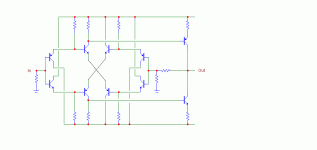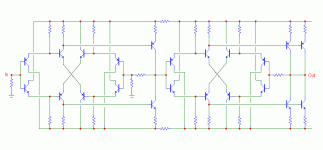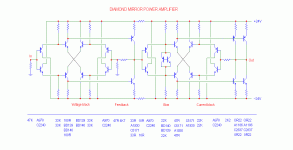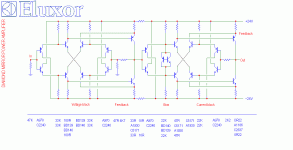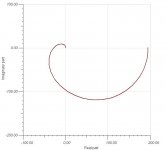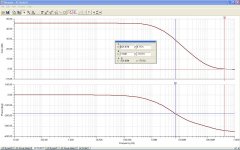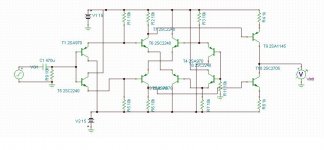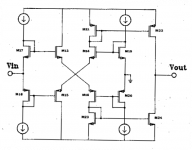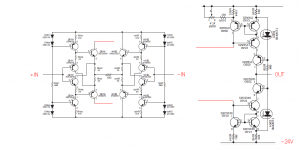many type of configurations at last drive to best solution
simple and accurate
It's not unconditionally stable. It needs some serious frequency compensation in order to be unity gain stable. I'm not even sure it's possible to compensate it completely.
Attachments
It's not unconditionally stable. It needs some serious frequency compensation in order to be unity gain stable. I'm not even sure it's possible to compensate it completely.
With some further work it could be. What Stee is showing here is a very poor simplified copy of Analog Devices "QuadCore" topology as used in opamps like AD8047. Probably still under patent protection.
Where did you go dig this up, Stee ??
With some further work it could be. What Stee is showing here is a very poor simplified copy of Analog Devices "QuadCore" topology as used in opamps like AD8047. Probably still under patent protection.
Where did you go dig this up, Stee ??
Well, I'm not interested in stealing patented technology, but if not, then please go ahead and make it stable if you're interested. I already went to the trouble of modeling it and showed that as it is, it's unstable.
I have experimented and tested a amp with this type of topology for my employer some 2 years back, it is capable of amazing performance, the problem being dc performance and stability. It is much better suited for IC manufacturing because many of the parts need to be matched.
Like I said Stee s schematic is very simplified, It wont work at all.
Like I said Stee s schematic is very simplified, It wont work at all.
I have experimented and tested a amp with this type of topology for my employer some 2 years back, it is capable of amazing performance, the problem being dc performance and stability. It is much better suited for IC manufacturing because many of the parts need to be matched.
Like I said Stee s schematic is very simplified, It wont work at all.
OK, thanks. I've pretty much given up on discrete designs because I have found that at the level of understanding that I have, there is no way I can design something that has an open loop performance that is unity gain stable. Standard types of frequency compensation that I know of cause other problems in my circuits, so I believe John Curl when he says that unless you have a ton of money to throw at a discrete project, it's best to just stick with the available ICs.
- Status
- This old topic is closed. If you want to reopen this topic, contact a moderator using the "Report Post" button.
- Home
- Amplifiers
- Solid State
- simple diamond mirror preamplifier
